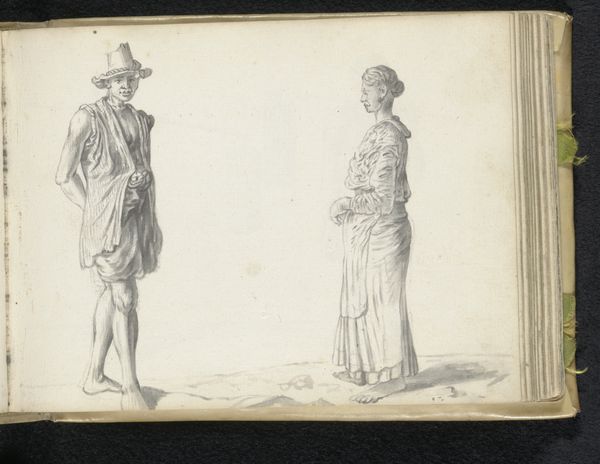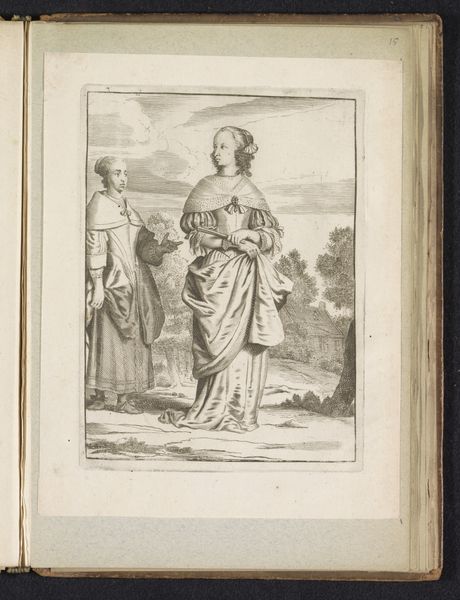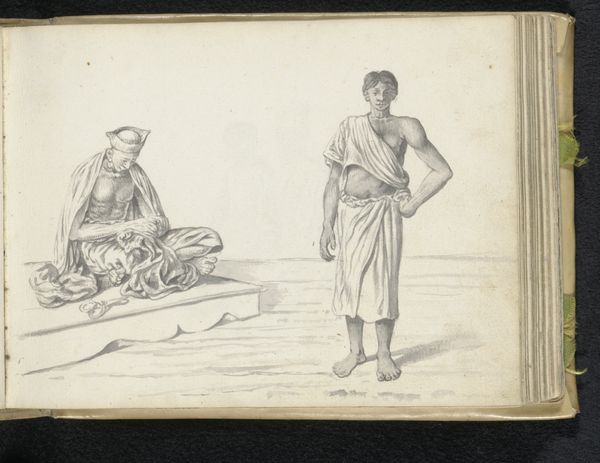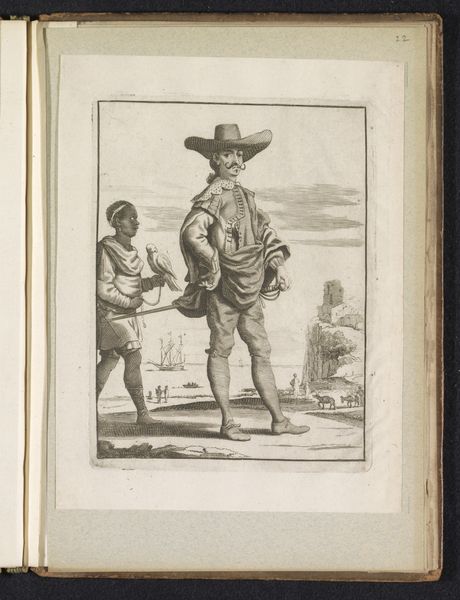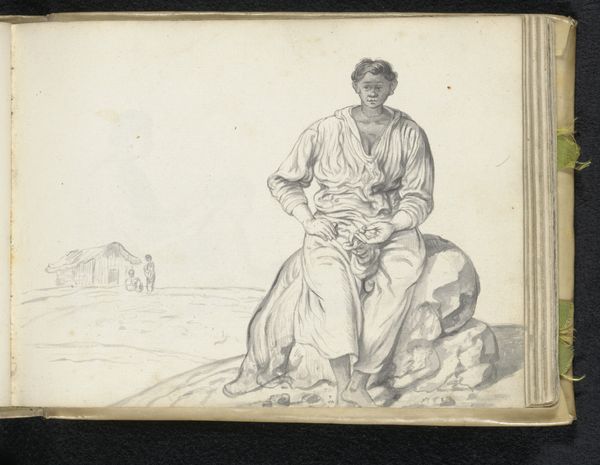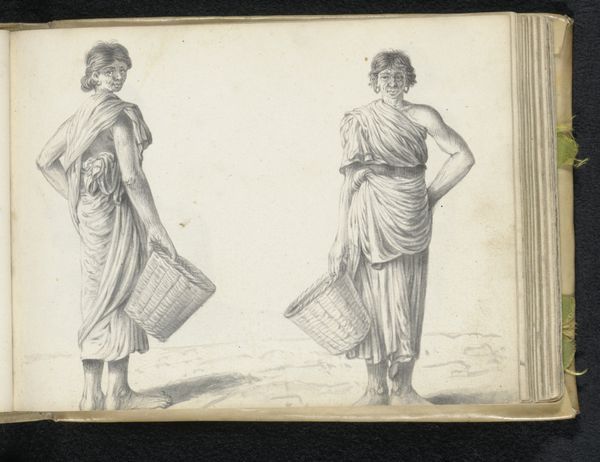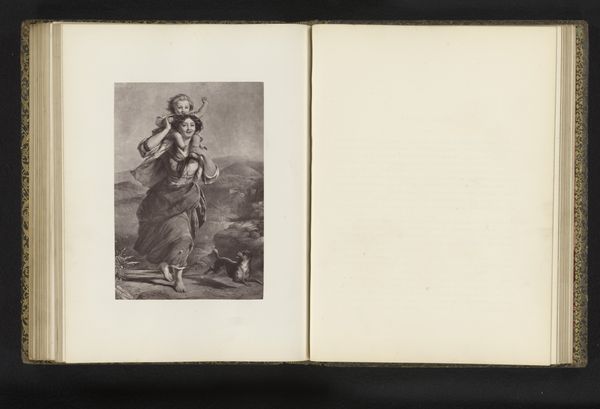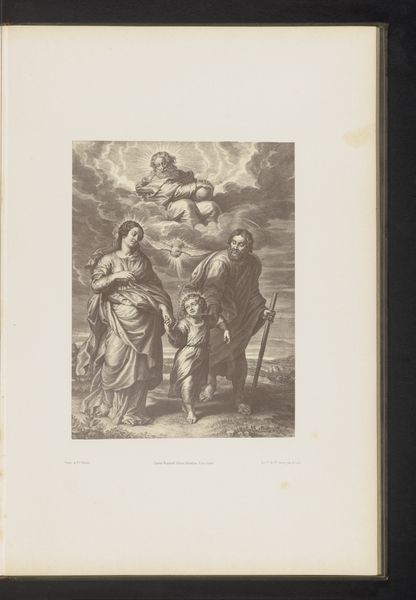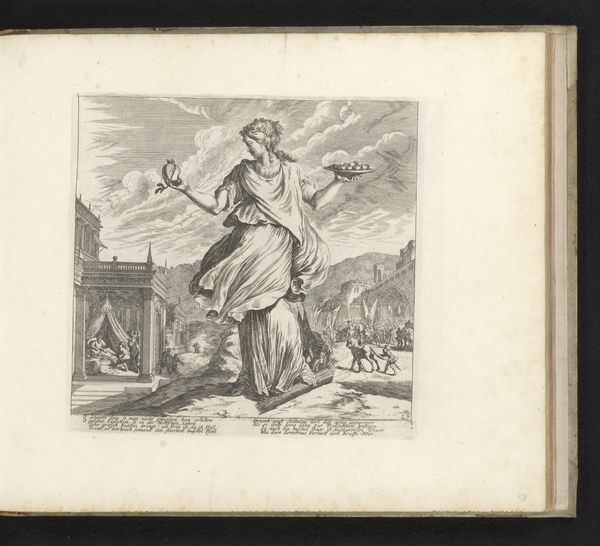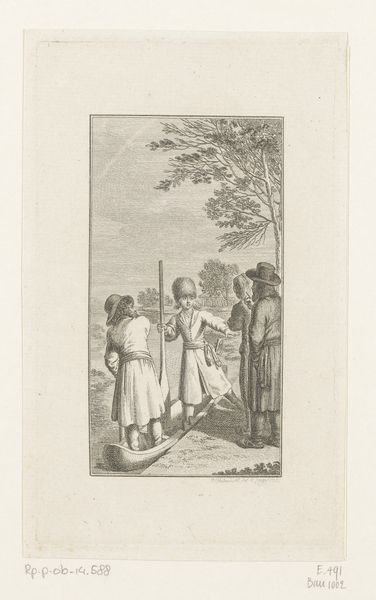
engraving
#
baroque
#
dutch-golden-age
#
genre-painting
#
history-painting
#
engraving
Dimensions: height 171 mm, width 128 mm
Copyright: Rijks Museum: Open Domain
Curator: The Rijksmuseum holds this engraving from around 1660 titled “Zwarte vrouw met kleine bediende” by Jan van Troyen. It depicts a Black woman standing, attended by a child servant. The piece falls within the Dutch Golden Age. What are your initial thoughts? Editor: My first impression is one of quiet dignity mixed with palpable unease. The contrast of textures created through the engraving technique adds visual depth. The Black woman’s face is quite striking and rather sad; it speaks volumes, but I am still determining the complete message. Curator: Right, that complexity hits hard. We see tropes typical of the era – the presentation of exoticism, a clear demonstration of wealth and status indicated by the attendant, and what it suggests about race and power dynamics. It's imperative to understand this visual vocabulary critically; consider how Van Troyen might be reinforcing contemporary attitudes, whether consciously or unconsciously. Editor: I agree; her pose and adornment serve specific purposes, clearly. However, it might reveal the psychological nuances present in depictions of racial identity and status, using clothing, body language, and, crucially, that young servant. Her elaborate dress, especially her oversized hat, recalls regal styles from the past, hinting at lineage or a sense of inherited presence, and it begs so many questions about appropriation. Curator: I’d argue we have to see the colonial system’s dehumanizing impact right alongside those adornments. Are we looking at an assertion of self or merely an image constructed for a white European gaze? Perhaps it’s both; this intersection can invite nuanced analyses of identity and the ways race, class, and gender intertwine to shape individual and collective narratives. The land is distant, but it may give context to this. Editor: And look at the composition! She is large in the frame while he’s smaller and his identity or individual characteristics appear less significant or minimized through simple treatment in contrast with her. But in combination with the land – are they free? Where exactly are they? I can see how visual representations become vehicles of power…and the colonial legacy of images persists even now. Curator: Precisely. Analyzing such a piece invites necessary and uncomfortable conversations about history’s reverberations and their implications for today’s society, inviting critical discussions regarding colonialism, power and agency in artistic depictions. Editor: Ultimately, the image resonates by holding a mirror up to historical attitudes toward race, leaving us with urgent, ethical considerations about viewing practices themselves. It gives insight into colonial histories we still negotiate now.
Comments
No comments
Be the first to comment and join the conversation on the ultimate creative platform.
